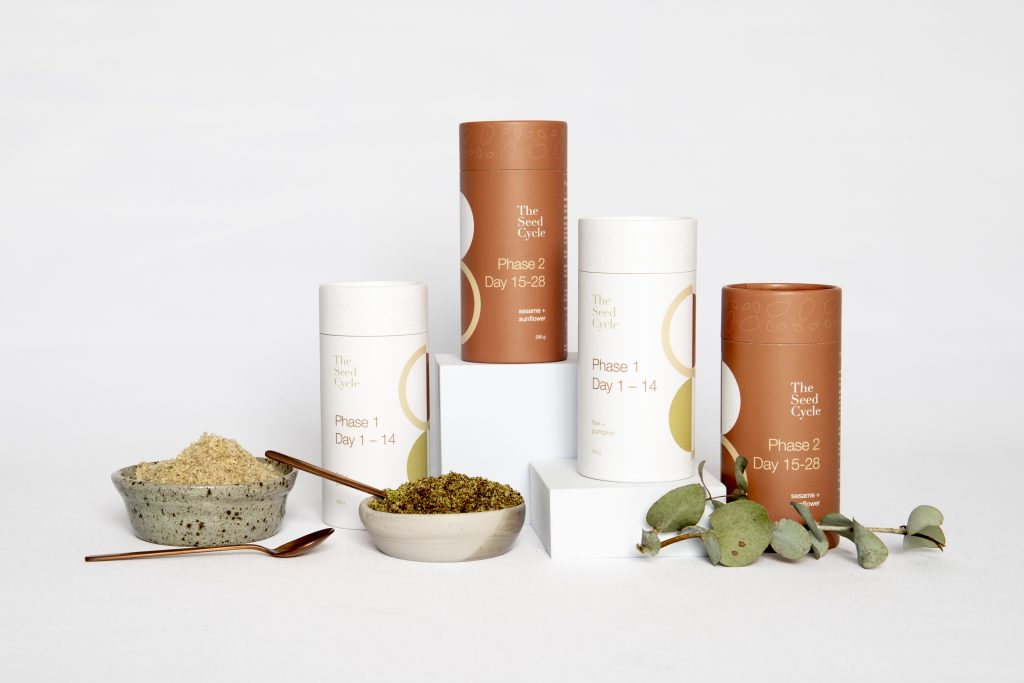Before we get stuck into the detail, let’s do a quick recap on how seed cycling supports hormones.
Female hormones are regulated through complex signalling and feedback mechanisms. Signals are received and then transmitted by the hypothalamus part of the brain out to the pituitary gland, adrenal glands and then ovaries (the HPAO axis). In times of change or increase physical or emotional stress of any kind, the HPOA axis can become dysregulated.
Symptoms such as longer or irregular menstrual cycles, hot sweats, increased PMS, mood changes, fatigue, changes in bleeding and reduced ability to handle training intensity may appear. These symptoms frequently occur when there is no known structural or functional issue with the ovaries.
In order to reduce symptoms, some women reach for pharmaceutical medications without understanding or being aware they have the potential to further dysregulate long-term hormonal balance and deplete nutrients such as zinc and magnesium.
In addition to medicinal herbs such as Chaste Tree, Schisandra, Kudzu or Rhodiola, seed cycling may provide subtle hormonal support by boosting estrogen levels in the first part of the cycle and progesterone levels in the second part without the possible side effects of other medications.
THE PROCESS
Seed cycling supports hormones by providing nutrient rich foods in the form of seeds at different times of the menstrual cycle.
How to seed cycle
Preparation
Combine ¼ cup of each of the following seeds nominated to the two phases of your cycle. Take your seeds (according to which phase of your cycle you are in) and whiz them in a coffee grinder to break the seeds down into a meal-like consistency. Make 2 separate jars of seeds.
Follicular phase day 1-14 of your cycle (or until ovulation)= flaxseed + pepitas (pumpkin seeds)
Luteal phase day 15-28 of your cycle (or post ovulation) = sesame + sunflower seeds
Dose: 1-2 tablespoons of combined ground seeds daily.
How: Add seeds to smoothies, on top of breakfast oats, avocado toast, coconut yogurt or as a garnish on savoury soups, salads or scrambled eggs. Seed cycling biscuits or brownie mixes are also a great option. Choose whole, organic seeds instead of pre-ground seeds where possible.
Storage: Store ground seeds in an air-tight jar in the fridge to preserve their essential fatty acids from oxidation.
Duration: Most women need to allow 3-4 cycles before expecting changes to occur.
An easy way to ensure you have the right seeds across the month is to purchase a seed cycling kit.
About the Author: Kate Smyth is a Sports naturopath, nutritionist and female-centric running coach. She is the founder of the Athlete Sanctuary- a holistic healthcare clinic for athletes of all levels and sporting codes. Kate has a thirst for knowledge with two bachelor’s and a master’s degree under her belt. She has been involved in sports for many decades and competed for Australia in the Commonwealth Games and Olympic Games marathons with a personal best time of 2 hours 28 minutes. For more information visit www.https://https://athletesanctuary.com.au/wp-content/uploads/2023/03/normatec-3-lower-body-system-thumb_720x-1.webp.com.au/wp-content/uploads/2020/05/Seed-Cycle-Blends-scaled-1.jpg.com.au





